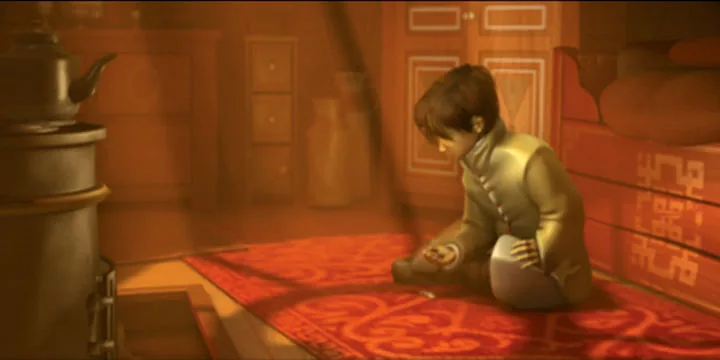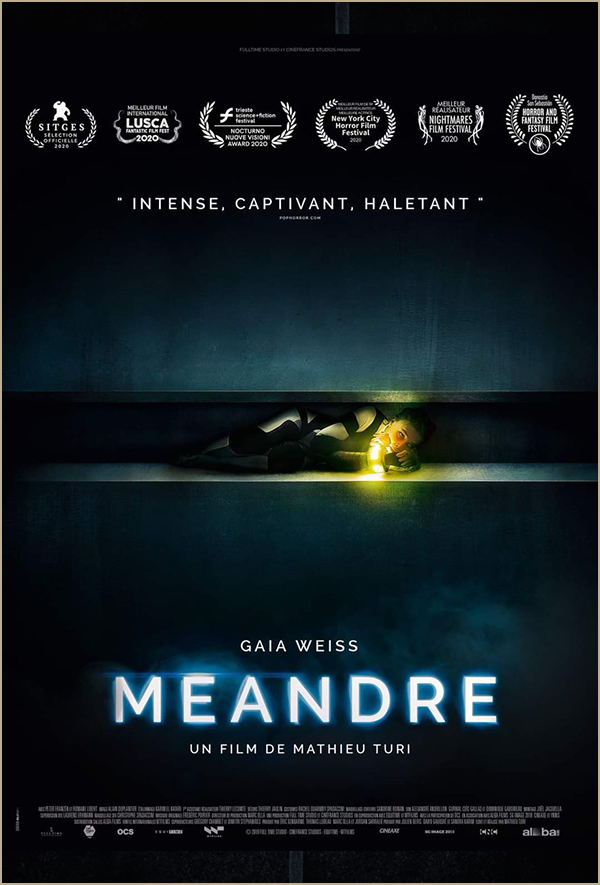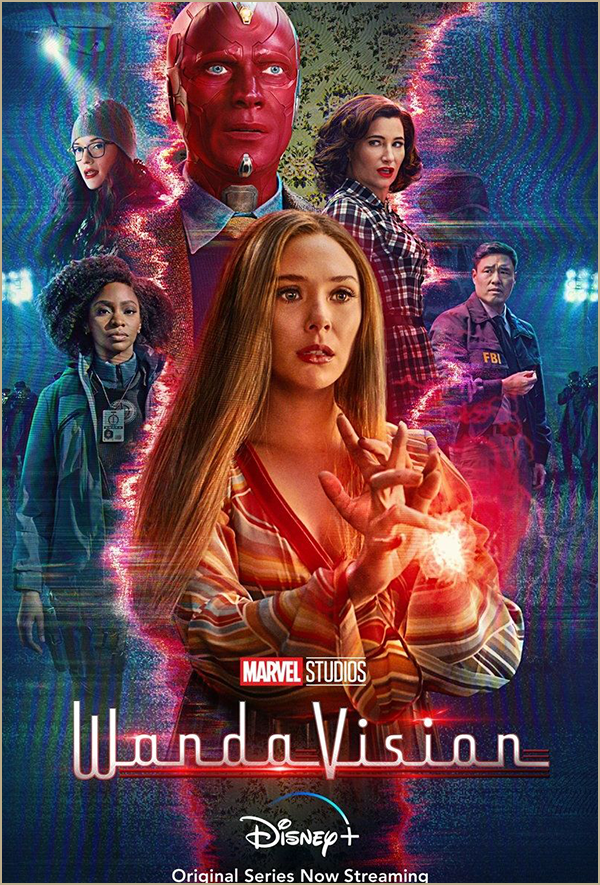
Meet The Yardeners – the passionate team at The Yard, committed to cultivating the seeds of creativity and transforming them into captivating visual effects, fruitful collaborations, and unforgettable stories.
This week, we are thrilled to introduce Audrey Lagnous, one of our accomplished VFX Producers. With a career spanning 15 years, Audrey has contributed to some of the most significant VFX projects for top global brands and high-profile productions, having worked at leading VFX studios in both France and Japan. Since joining The Yard four years ago, she has played a pivotal role in managing the production of the visual effects for series and films across television, streaming platforms, and cinema, which have become landmarks of our studio.
Hello Audrey ! Could you please explain your current role at The Yard ?
Hello everyone ! I’m a VFX Producer at The Yard, working on film and series projects.
In essence, my role involves ensuring that each project is delivered on time, at the highest quality, and within the agreed budget, all while managing the necessary teams. I also serve as the main point of contact for the client, maintaining close collaboration with the show’s supervisors to guarantee their satisfaction.
I oversee my production team, which varies in size depending on the scope and nature of the project.
What do you find great about your department ?
The VFX production department is the nerve center and organizational backbone of any project, even if the recognition of our work and role has taken time to be fully acknowledged, both by the industry and within studios. I love being involved in every stage of a project, from preparation to final delivery, and collaborating closely with nearly every department and team in the studio.
I appreciate when things are clear and well-structured. And I really enjoy always thinking about how to improve processes and anticipate challenges—this is a significant part of our responsibilities in production.
It’s also incredibly inspiring to witness our VFX come to life and evolve into stunning final shots.
At The Yard, our team is tightly knit and works in a healthy, supportive environment, with a strong sense of collaboration. Our Head of Production, Virginie Wintrebert, is a true leader who has greatly contributed to our growth and development since joining the studio.

What brought you to VFX production ?
Since I was a child, I have always loved images and special effects films, as well as anything related to creativity and animation. However, it was during my first year of higher education that I decided to pivot towards 3D, inspired by my cousin’s graduation film, which I fell in love with. It became clear to me that this was the field where I wanted to build my career. I pursued a program that taught me the fundamentals of both 2D and 3D, as well as project management.
During my studies, I considered whether to become a graphic designer or focus on production, having gained experience through internships in both areas. Ultimately, I chose production. It was a more challenging path given my personality, but I felt it was the right fit for me, and those around me during my studies saw it as a good match as well. Additionally, if I wanted to create images, I could always do so on the side. In the end, having skills in both areas has been a tremendous asset in production.

According to you, what are the main challenges in VFX production ?
I would say the primary challenge in VFX production is adhering to the project schedule within the allocated budget. There are numerous factors and pieces of information that can impact the timeline, so it’s crucial to be highly adaptable to keep the project on track.
The second challenge, in my opinion, is ensuring effective communication among all project members and the accurate transmission of information according to each person’s role.
Finally, attention to detail in all our daily tasks is essential. Precision is inherent to our field, regardless of the position or role one holds in the production process.

Is there any funny sentence / phrase that you often hear or say in your job ?
In production, we often hear the phrase ‘Let it go.’ It’s important to know when to let go and take a step back in complex situations, allowing us to refocus on finding solutions. This is a message I try to convey to my team as well.
During reviews, I often hear ‘too much is never enough,’ and once we’ve reached that point, it’s not uncommon to hear ‘split the difference.’ Just a few winks to my teams of artists and supervisors 🙂
Since you’ve joined The Yard, you’ve worked on different film and series projects, French and international ones. Could you tell us about these productions? Which ones were the most challenging and why ?
The latest project I’ve just completed is ‘The Rings of Power – Season 2,’ and it has been by far the most challenging and intense project I’ve had the opportunity to work on. Some shots were technically complex and challenging to organize. Managing the team over an extended period was also a significant challenge.
I also worked on ‘Murder Mystery 2’ for Netflix, where our primary challenge was managing the sheer volume of shots to deliver, requiring meticulous organization and follow-up.
For ‘Notre Dame on Fire,’ we faced the constraint of tight deadlines. We had to adapt quickly to meet these short timelines, and it was the first time we handled such a significant amount of large-scale FX work on a single show.
Nomadland, Meander, WandaVision, Notre-Dame on Fire … These are examples of multi-awarded films and series on which you’ve worked. How does it feel to work on such famous titles?
I absolutely love working on major films, series, or franchises. It’s incredibly motivating and typically leaves me with new knowledge, enhanced skills, and improved instincts—it’s very educational.
Working on these types of productions also gives us the opportunity to collaborate with clients who have remarkable experience and filmographies. Observing their methods and practices is incredibly enriching.
I feel grateful to have the chance to work on such significant projects. Achieving this feels like one of the major milestones in my career, but fortunately, I have many more goals to pursue!
Audrey’s filmography includes major French and international productions :
Throughout your career, you’ve had the opportunity to work at diverse studios, in France and Japan. Have you noticed any discernible differences in the approaches to VFX production across these regions ?
I indeed completed my training in Japan at the end of my academic studies, and the most noticeable difference I observed was the work culture and the approach to client management. In Japan, culturally, the client is regarded as ‘a god.’ Negotiations, client interactions, and management are quite different when compared to other countries. Japanese employees’ dedication to their work is generally intense.
Although I didn’t have the opportunity to work in a VFX studio in Japan, so my points of comparison are somewhat limited, I can say that, at the time I was there, there were few VFX studios focused on international productions. Most were oriented towards the Japanese market with its unique codes and influences. However, I’ve seen this change and evolve in recent years, which I find very interesting. Notably, this year’s Oscar for Best Visual Effects went to ‘Godzilla Minus One,’ marking the first time a Japanese production has received this prestigious award.
What major developments do you foresee in production ?
I believe a major evolution in production over the coming years will be closely linked to AI, given its rapid advancement. We’ll likely need to learn how to effectively leverage AI, as it may become a valuable tool for planning and drafting estimates.
Any advice you’d give to students to choose VFX production for their career ?
My advice to students pursuing a career in VFX production is to learn the fundamentals of 2D/3D/VFX and the VFX pipeline. Understanding who needs what and when is a significant advantage when starting out.
However, since this is a passion-driven field, I recommend showing enthusiasm for everything, being highly curious, proactive, and well-organized. Don’t hesitate to ask questions, observe how others work, and offer help if time permits.







